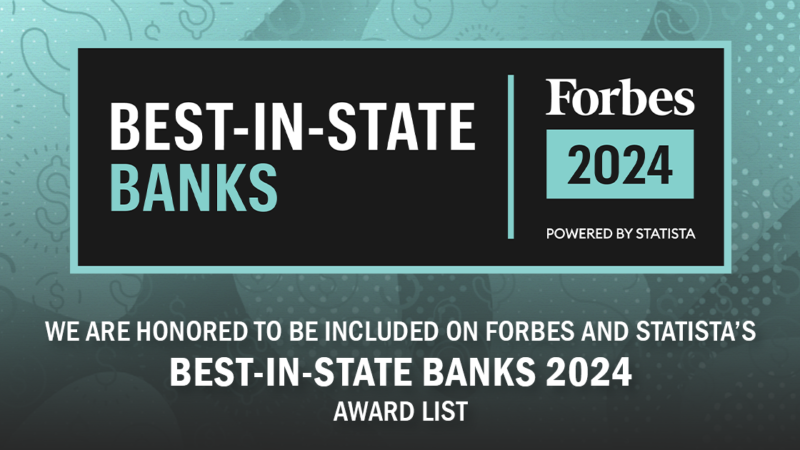Washington Trust Bancorp, Inc. Announces New Stock Repurchase Program
December 01, 2020
WESTERLY, R.I., December 1, 2020 (PR NEWSWIRE)… Washington Trust Bancorp, Inc. (Nasdaq: WASH) today announced that the Corporation's Board of Directors adopted a stock repurchase program (“Stock Repurchase Program”), which authorizes the repurchase of up to 850,000 shares, or approximately 5%, of the Corporation’s common stock. This authority may be exercised from time to time and in such amounts as market conditions warrant, and subject to regulatory considerations. The timing and actual number of shares repurchased will depend on a variety of factors including price, corporate and regulatory requirements, market conditions, and other corporate liquidity requirements and priorities. The Stock Repurchase Program expires on October 31, 2021 and may be modified, suspended, or discontinued at any time. The Corporation had approximately 17.3 million shares outstanding as of November 30, 2020.
For more investor information, please visit https://ir.washtrust.com.
Background
Washington Trust Bancorp, Inc. is the parent of The Washington Trust Company. Founded in 1800, Washington Trust is the oldest community bank in the nation, the largest state-chartered bank headquartered in Rhode Island and one of the Northeast's premier financial services companies. Washington Trust offers a full range of financial services, including commercial banking, mortgage banking, personal banking and wealth management and trust services through its offices located in Rhode Island, Connecticut and Massachusetts. The Corporation’s common stock trades on NASDAQ under the symbol WASH. Investor information is available on the Corporation’s web site at http://ir.washtrust.com.
Forward-Looking Statements
This press release contains statements that are “forward-looking statements”. We may also make forward-looking statements in other documents we file with the SEC, in our annual reports to shareholders, in press releases and other written materials, and in oral statements made by our officers, directors or employees. You can identify forward-looking statements by the use of the words “believe,” “expect,” “anticipate,” “intend,” “estimate,” “assume,” “outlook,” “will,” “should,” and other expressions that predict or indicate future events and trends and which do not relate to historical matters. You should not rely on forward-looking statements, because they involve known and unknown risks, uncertainties and other factors, some of which are beyond our control. These risks, uncertainties and other factors may cause our actual results, performance or achievements to be materially different from the anticipated future results, performance or achievements expressed or implied by the forward-looking statements.
Some of the factors that might cause these differences include the following: the negative impacts and disruptions of the COVID-19 pandemic and measures taken to contain its spread on our employees, customers, business operations, credit quality, financial position, liquidity and results of operations; the length and extent of the economic contraction as a result of the COVID-19 pandemic; continued deterioration in local, regional, national or international economic conditions or conditions affecting the banking or financial services industries, financial capital markets and the customers and communities we serve; changes in consumer behavior due to changing political, business and economic conditions, including increased unemployment, or legislative or regulatory initiatives; the possibility that future credits losses are higher than currently expected due to changes in economic assumptions or adverse economic developments; volatility in national and international financial markets; reductions in net interest income resulting from interest rate volatility as well as changes in the balance and mix of loans and deposits; reductions in the market value or outflows of wealth management assets under administration; decreases in the value of securities and other assets; reductions in loan demand; changes in loan collectibility, increases in defaults and charge-off rates; changes in the size and nature of our competition; changes in legislation or regulation and accounting principles, policies and guidelines; operational risks including, but not limited to, cybersecurity incidents, fraud, natural disasters and future pandemics; reputational risk relating to our participation in the Paycheck Protection Program and other pandemic-related legislative and regulatory initiatives and programs; and changes in the assumptions used in making such forward-looking statements. In addition, the factors described under “Risk Factors” in Item 1A of our Annual Report on Form 10-K for the fiscal year ended December 31, 2019, as updated by our Quarterly Reports on Form 10-Q and other filings submitted to the SEC, may result in these differences. You should carefully review all of these factors and you should be aware that there may be other factors that could cause these differences. These forward-looking statements were based on information, plans and estimates at the date of this report, and we assume no obligation to update any forward-looking statements to reflect changes in underlying assumptions or factors, new information, future events or other changes.











